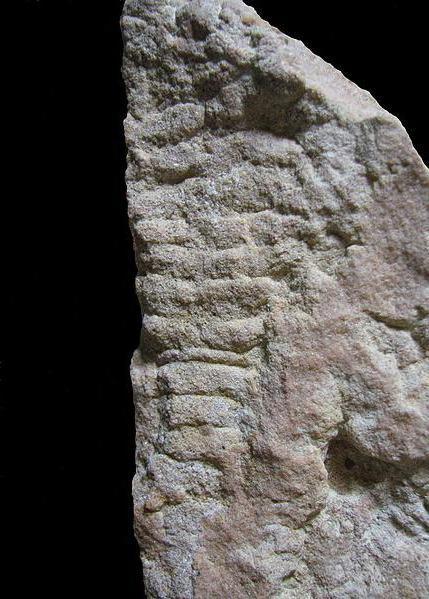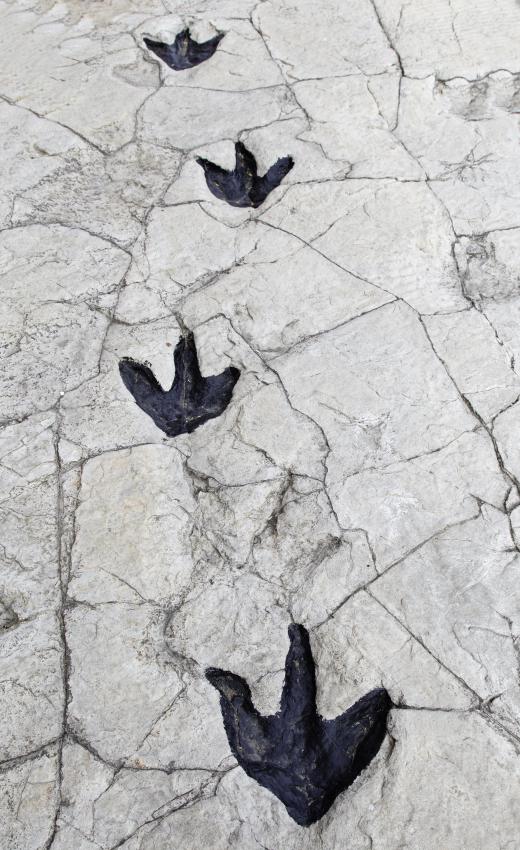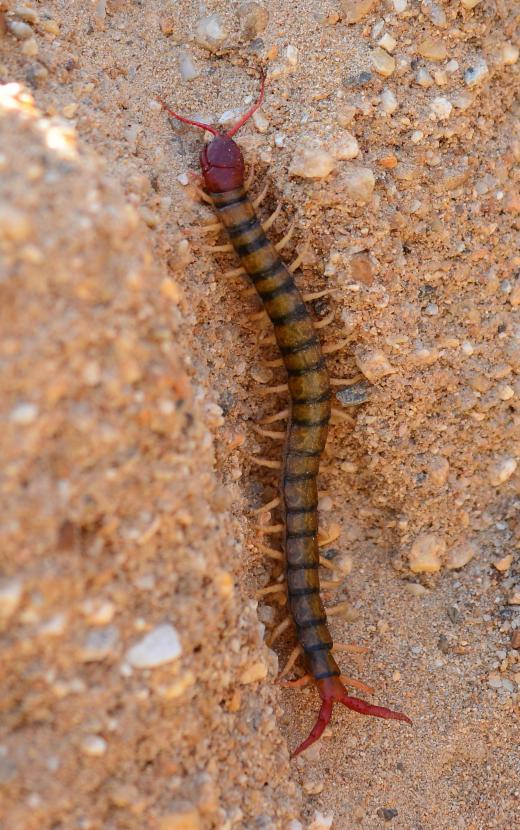What Were the First Animals to Walk on Land?
 Michael Anissimov
Michael Anissimov
According to research published in 2012, the first footprints on land were the footprints of euthycarcinoids. Euthycarcinoids are arthropods that lived approximately 500 million years ago. Scientists were uncertain of the first animal that set foot on land and suspected amphibians or centipedes for some time. However, recent research shows that it was actually euthycarcinoids of the Cambrian period that first made the transition from sea to land. It was the discovery of fossils preserving both euthycarcinoids and protichnites, that is walking imprints,that allowed scientists to make the connection.
Actually, the idea that arthropods may have been the first to walk on land had emerged all the way back in 1852 by Sir Richard Owen. He based the idea on fossils of footprints in Quebec. However, the idea could not be proven until the fossils of the animal responsible for the footprints could be found. Hence, the theory was proven only recently when the segmented tail of a euthycarcinoid was identified in one of the footprint fossils.

Aside from euthycarcinoids, one of the first verified land animals was a one-centimeter myriapod. Present-day examples of myriapods include millipedes and centipedes. This myriapod, discovered in 2003 in Scotland and named Pneumodesmus newmani, is dated to 428 million years ago. Paleontologists can tell it lived on land because its fossil shows it possessed spiracles; holes that insects, spiders, rays, and sharks use for breathing air. Prior to the discovery of newmani, the oldest known air-breathing creature was a spider-like organism from 410 million years ago.

The first land-walking animals are often incorrectly cited as Devonian transitional forms called “fishapods” because they are intermediate between fish and true tetrapods. An example is the fish Tikaalik, which lived approximately 375 million years ago, during the Devonian period. It is remarkable that such organisms are so frequently cited as the first land animals when land animals from more than 50 million years before, such as Pneumodesmus newmani, are now widely known. The effect may have something to do with a bias in favor of the more familiar vertebrates over invertebrates.

The earliest land animals probably lived in oxygen-poor shallow pools near land. As the first vascular plants developed, they would have choked the areas around these pools with weeds, making it evolutionarily advantageous to climb over and around them via quick forays onto land areas. The land at that time would have been much more nutrient-rich than the water, as plants colonized the land before animals and left their decaying plant matter everywhere. Bacteria and fungi broke down much of the plant matter but it still would have been appealing to a hungry fish. Around 365 million years ago, some fish (so-called “fishapods”) developed limbs and climbed onto the land. The appearance of the first true trees about 370 million years ago would have helped this along, by depositing more nutrients into the soil and making the environment more habitable.
AS FEATURED ON:
AS FEATURED ON:














Discussion Comments
The question asked is "What were the first animals to walk on land" --- not "What were the first fully terrestrial animals to walk on land." Thus, an animal that walks on land only part of its time and whose ability to breathe air is undetermined still qualifies, and the first such animals to do this were euthycarcinoids and giant slug-like animals. Your statement "...no fossils have been found of the animals that made [Climactichnites and Diplichnites]" is not entirely correct.
While fossils of the slug-like animals that made Climactichnites still haven't turned up, several fossils of the euthycarcinoids that made Diplichnites (and Protichnites) have been found in Wisconsin and Quebec. Impressions of the Wisconsin euthycarcinoid have been found that essentially show that euthycarcinoid making Protichnites.
The fossil and experimental evidence for this Cambrian land-walker is just as strong as the evidence for air-breathing myriapods in the Silurian. See the 2010 and 2012 papers from the Journal of Paleontology written by Collette and Hagadorn, and Collette, Gass and Hagadorn, respectively, which I referred to earlier. To this date (10-FEB-2016) no one has refuted those studies, and they have been cited in several peer-reviewed publications.
@lightning88: I'm not an expert, but from what I've read, mudskippers actually independently discovered life on land much later than our own ancestors. They are "ray finned fish" similar to most familiar bony fish whereas we arose from the separate group "lobe finned fish". There are still lobe finned fish around however. The coelocanth is the best known example but it lives entirely in the water. Lungfish are an example of lobe finned fish that can survive droughts out of water but they don't make a habit of living out of water like the mudskipper.
I learned some of this from "The Ancestors Tale" by Richard Dawkins.
The confirming study I mentioned earlier was published in the May, 2012 issue of the Journal of Paleontology. The first land-walkers were euthycarcinoids. As far as we know, there are no surviving species.
Update: Body fossils of arthropods known as euthycarcinoids have now been found in the same Cambrian beds that preserve Protichnites and Diplichnites trackways. J. Collette and J. Hagadorn published those fossils in the Journal of Paleontology in 2010.
Other material has now been found that further links those trackways with the body fossils and the study is currently being wrapped up for publication.
Thanks for this article -- the detailed and clear writing really made it great.
I also liked how you didn't get stuck into the "First Encyclopedia of Animals" mentality and only stick with vertebrates -- very well researched and written.
Are all the animals that first walked on land extinct now, or are there still remaining "living fossils"?
I know that a lot of the animals considered endangered or extinct have later showed up as living fossils, like coelacanths and the like.
And I know that there are still some "fishapod" like animals today, like mudskippers. So are all the animals mentioned above extinct, or do any of them still exist?
Hah, can you imagine a Baby's First Animals book that included tetrapods -- now that would be a book worth investing in.
It would be even better if those first 100 animals books were written according to the real first 100 animals, as far as we know. I think that would be a much better "My First Book of Animals" than those ones that only focus on farm animals.
Post your comments